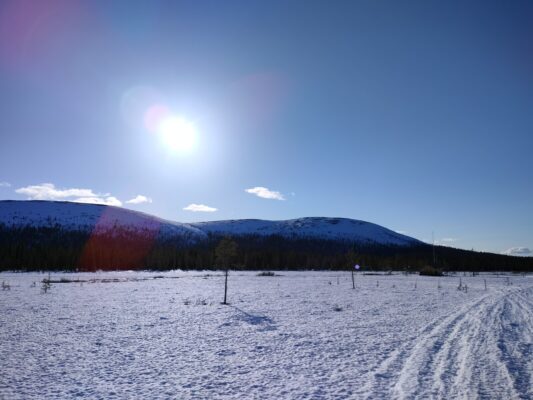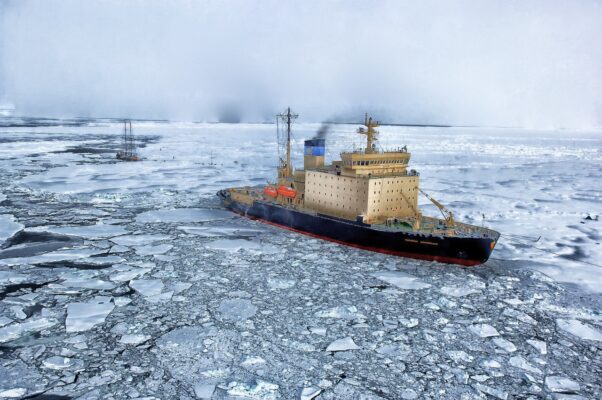We know that climate change is affecting many aspects of what we have considered “stable” throughout a long period of modern times. One of many impacted and changing factors is snow and thereby also snow meltwater. One way to study meltwater is to trace it by the usage of stable water isotope signals and we plan to use it by asking: Are we underestimating the portions of snow meltwater in differen ...[Read More]
Did you know that a lack of Arctic shipping regulation has detrimental environmental effects?
Increased maritime transport in the Arctic, facilitated by the reduction in sea ice cover, is causing tremendous harm to an already vulnerable part of the world. Insufficient regulation of Arctic shipping has detrimental environmental effects on a global scale. These effects include, e.g. underwater noise pollution, oil spill risk and threats to the global climate. But did you know what role regul ...[Read More]
Ice-Hot News – You have a “cool” new Policy Point of Contact in the Cryosphere Division!
At the 2023 EGU General Assembly, our cryosphere division members all voted “YES!” to have a division policy point of contact! If you’re wondering how to engage in science policy at our division level, what a division policy officer does, who was named and what happened next… This blog post should answer a lot of these questions (or I hope)! First off, a little history about how policy officers ca ...[Read More]
A journey to the Edge of the Ice: Discovering How the Ocean Meets the Polar Sea Ice
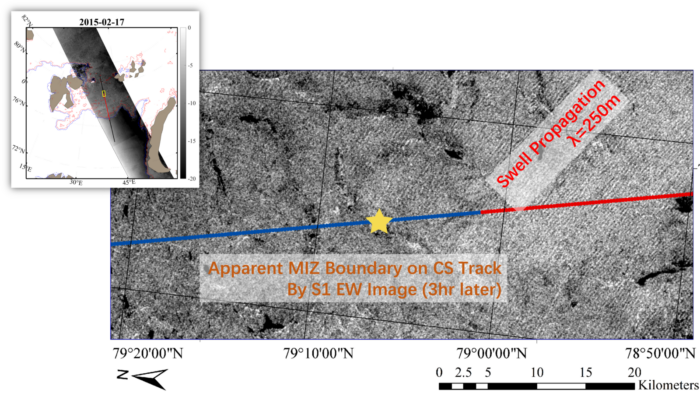
Let’s continue the journey of discovering cool facts about sea ice which started with breaking the ice. This time, we’re diving into a fascinating part of the Arctic and Antarctic: the Marginal Ice Zone (MIZ). Imagine a place where the vast, frozen world of sea ice meets the moving waters of the ocean underneath. This is the MIZ, a unique area where air, water, and ice mix and mingle. ItR ...[Read More]
Antarctica Uncovered: Exploring the Exposed Surfaces Around the Melting Continent
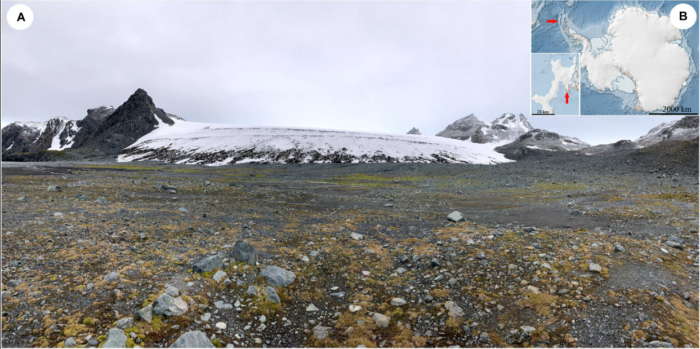
In 2020, ocean scientists discovered a new island off the Pine Island Glacier ice shelf, naming it after the Norse goddess, Sif. The island is one of many new regions being exposed in the wake of increased ice shelf melting and glacial retreat. While these newly-revealed lands have been discussed in the Arctic and alpine ecosystems, the uncovered island and coastlines of Antarctica have been less ...[Read More]
UndercoverEisAgenten – Permafrost, drones and young explorers investigating Arctic change
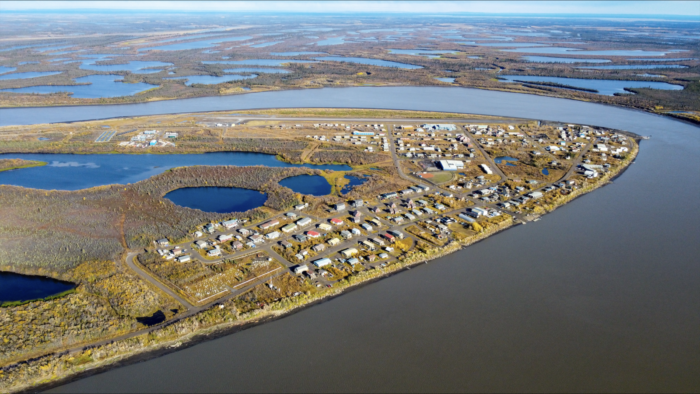
The “UndercoverEisAgenten” project takes us on a drone journey over the ever-changing permafrost landscapes. Initiated by the Alfred Wegener Institute (AWI) for Polar and Marine Research, the German Aerospace Center’s (DLR) Institute of Data Science, and the Heidelberg Institute for Geoinformation Technology (HeiGIT), this venture is about more than just capturing images. It̵ ...[Read More]
An exceptional year: What’s up with Antarctic sea ice?
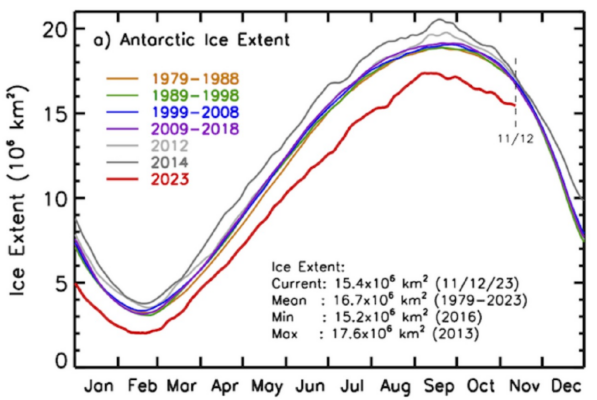
In our blog, we have written a lot about Arctic sea ice (see this post, this post and this post for recent examples). Much less has been written about Antarctic sea ice, i.e. its southern counterpart. That is not surprising as Arctic sea ice has experienced major losses since the late 1970s (beginning of satellite observations), while not much had happened to Antarctic sea ice (despite a small exp ...[Read More]
A ‘Ticking Bomb’: Understanding the 2023 Glacial Lake Outburst Flood (GLOF) in Sikkim Himalaya
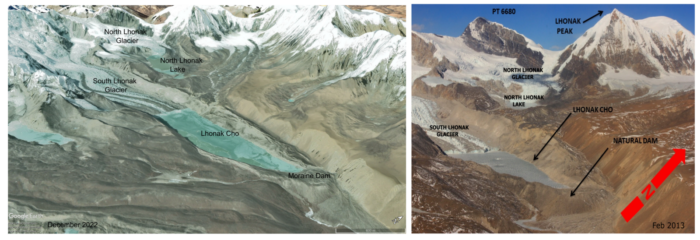
In this week’s blog post, Dr. Remya S N and Dr. Vishnu Nandan talk about how optical and radar satellite images were used to characterize the very recent catastrophic Glacial Lake Outburst Flood (GLOF) from the South Lhonak Lake in the Indian Himalaya before and after the flooding and highlight the importance of timely observations and monitoring for people’s livelihoods. The South Lhonak L ...[Read More]
Recipe to quantify calibration errors in a time-dependent ice sheet model
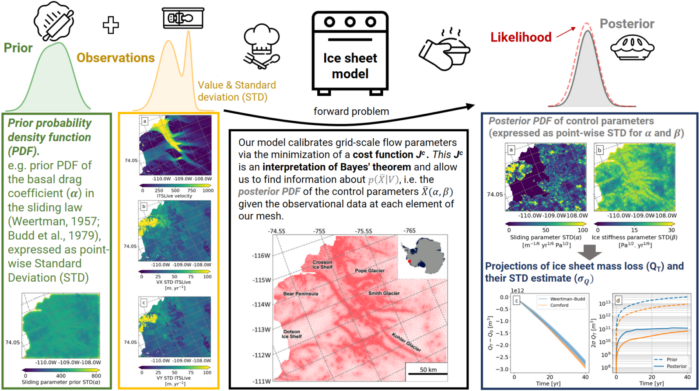
Ice sheet models are awesome tools that help us learn and predict the fate of ice sheets under human-induced climate change. However, all models have errors. What types of uncertainties exist in an ice sheet model and how can we quantify some of them efficiently? Check out our recipe to quantify one type of uncertainty in sea level rise projections: The model calibration error. Not a numerical mod ...[Read More]
The search for the Antarctic giants!
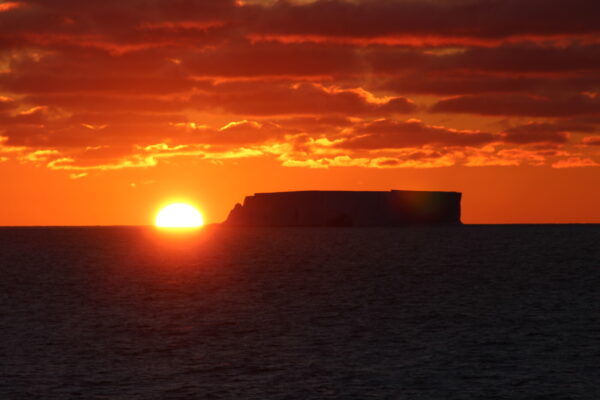
The deep Southern Ocean is full of giants! Some of them scared the sailors for centuries, like the colossal squid or, as they called it, The Kraken. They thought it was a huge monster capable of sinking ships! Far from it, these giants ran away from us, and we still know very little about them! They live in depths where the light cannot penetrate, the largest ecosystem on Earth, the Deep-Sea! They ...[Read More]

